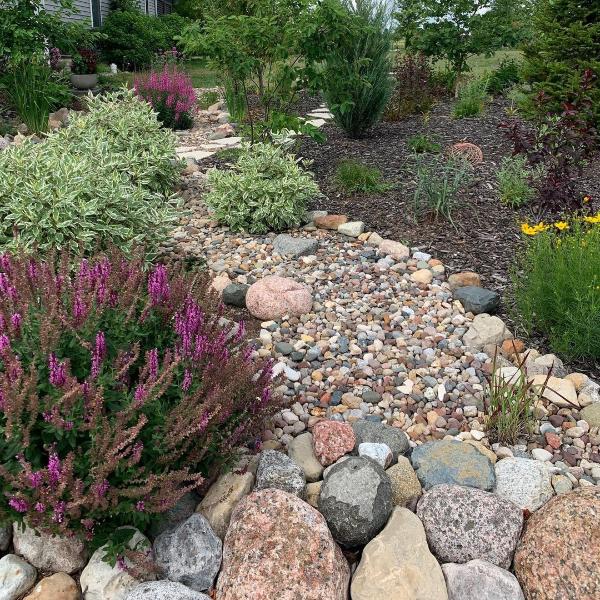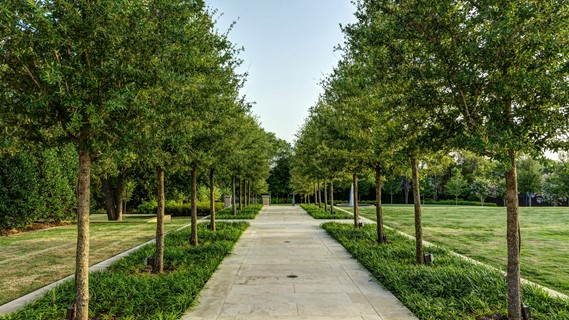3 Easy Facts About Hilton Head Landscapes Shown
Some Known Details About Hilton Head Landscapes
Table of ContentsThe Ultimate Guide To Hilton Head LandscapesThe Ultimate Guide To Hilton Head LandscapesSee This Report about Hilton Head LandscapesThe Best Guide To Hilton Head LandscapesThe Main Principles Of Hilton Head Landscapes The 20-Second Trick For Hilton Head LandscapesAll About Hilton Head LandscapesThe Best Guide To Hilton Head Landscapes
Kind compatibility is additionally a major element of unity in designone or more strikingly different types benefit contrast and focus, but normally all other types must have some similarities for a combined appearance. Appearance describes how crude or great the surface of the plant or hardscape material feels and/or looks.
Instances of plants with rugged texture include philodendrons, agaves, bromeliads, hollies, hands, and hydrangeas. Hardscape with rugged texture consists of rough-cut stone, rough-finished brick, and unfinished wood with knots and an elevated grain. Aged or old building material that keeps a weather-beaten surface is often coarse in texture. Features that create great texture consist of tiny foliage; slim, strappy leaves (lawns) or high, thin stems; small, dense branches and tiny branches; long stems (vines); and small, fragile flowers.
Fascination About Hilton Head Landscapes
Many plants are average structure, in that they can not be defined as having either crude or great appearance. Medium-textured plants act as a history to web link and merge the crude- and fine-textured plants.

To make an area feel smaller, place the rugged structures along the outer border and the fine textures closest to the viewer. The information of the crude appearance makes the plants show up closer and makes the room really feel smaller sized. The viewed structure of plants can likewise alter with the distance from the plant.
The Best Guide To Hilton Head Landscapes
Bold colors raise the contrast and make the appearance show up coarser, while low-key shades can flatten texture. Hardscape with a crude texturesuch as extremely harsh rocks and vibrant, big timberstends to make all plant product appear a lot more medium distinctive. Developers often establish a texture study (Number 8) theoretically to help determine the setup of plant products.
Shade in plant material and hardscape adds rate of interest and variety to the landscape. Color is the most conspicuous component in the landscape and is typically the emphasis of the majority of property owners; however, it is likewise the most temporary component, typically lasting just a couple of weeks a year for individual plants.
9 Simple Techniques For Hilton Head Landscapes
A basic summary of the shade wheel consists of the three primaries of red, blue, and yellow; the three secondary shades (a mix of 2 primaries) of eco-friendly, orange, and violet; and six tertiary shades (a mix of one nearby primary and secondary color), such as red-orange. Color theory describes the partnership of colors to each various other and how they need to be utilized in a composition.

Similar (in some cases called harmonious) color pattern are any three to 5 shades that are surrounding on the shade wheel, such as red, red-orange, orange, yellow-orange, and yellow, or blue, blue-violet, and violet (landscape design hilton head). The colors belong to every other due to the fact that they usually include two main shades blended to develop an additional and 2 tertiary shades, which suggests they share usual residential properties
Corresponding colors are usually discovered naturally in blossoms; an usual set is yellow and violet. Color is found in the blossoms, foliage, bark, and fruit of plants.
The Main Principles Of Hilton Head Landscapes
Eco-friendly foliage in all its various shades is the dominant shade by quantity, but various other colors capture focus extra readily due to their high comparison to the color environment-friendly. Color is also located in structures, rocks, pavers, timber, and furnishings. The majority of colors in natural materials, such as rock and wood, are commonly soft and often tend to be variations of brown, tan, and light yellow.
Shades have residential properties that can influence emotions, spatial understanding, light top quality, equilibrium, and focus. Great shades tend to be calming and need to be made use of in locations for leisure and tranquility.
10 Easy Facts About Hilton Head Landscapes Shown
The "temperature level" of shades can additionally impact the perception of range. Trendy shades tend to decline and are perceived as being farther away, making a room really feel larger. Warm shades tend to development and are viewed as being closer, making a room feel smaller. Color can likewise be used to record focus and direct sights.
Bright yellow, which has the highest intensity, additionally has a high comparison with all other shades (often described as a "pop" of color) and must be used moderately. A small quantity of extreme shade has as much aesthetic weight as a large quantity of a much more subdued or weak shade.
Analogous (often called unified) color design are any type of 3 to five colors that visit this website are adjacent on the color wheel, such as red, red-orange, orange, yellow-orange, and yellow, or blue, blue-violet, and violet. The shades are relevant per various other because they usually consist of 2 primary colors mixed to develop a secondary and two tertiary colors, which implies they share common homes.
See This Report about Hilton Head Landscapes
Complementary shades are typically located normally in flowers; an usual pair is yellow and violet. Color is found in the blossoms, foliage, bark, and fruit of plants.
Eco-friendly foliage in all its various tones is the dominant color by amount, yet various other shades record attention a lot more readily since of their high contrast to the color environment-friendly - Landscapers near me - https://www.kickstarter.com/profile/h1tnhdlndscps/about. Shade is also found in buildings, rocks, pavers, timber, and furniture. A lot of shades in natural materials, such as rock and timber, are usually muted and often tend to be variations of brownish, tan, and pale yellow
The Basic Principles Of Hilton Head Landscapes
Color is an essential aspect for producing rate of interest and range in the landscape. Colors have properties that can influence emotions, spatial assumption, light quality, balance, and focus. One residential or commercial property of color is defined about temperaturecolors seem amazing or cozy and can impact feelings or sensations. Awesome colors tend to be relaxing and need to be made use of in locations for relaxation and peacefulness.
The "temperature level" of shades can additionally affect the assumption of range. Great shades have a tendency to recede and are perceived as being farther away, making a room really feel bigger. Warm shades have a tendency to advancement and are perceived as being better, making a room feel smaller sized. Color can also be made use of to catch focus and direct sights.
As an example, intense yellow, which has the highest intensity, likewise has a high contrast with all various other colors (usually called a "pop" of shade) and ought to be made use of moderately. A little quantity of intense shade has as much aesthetic weight as a large quantity of a much more restrained or weak shade.